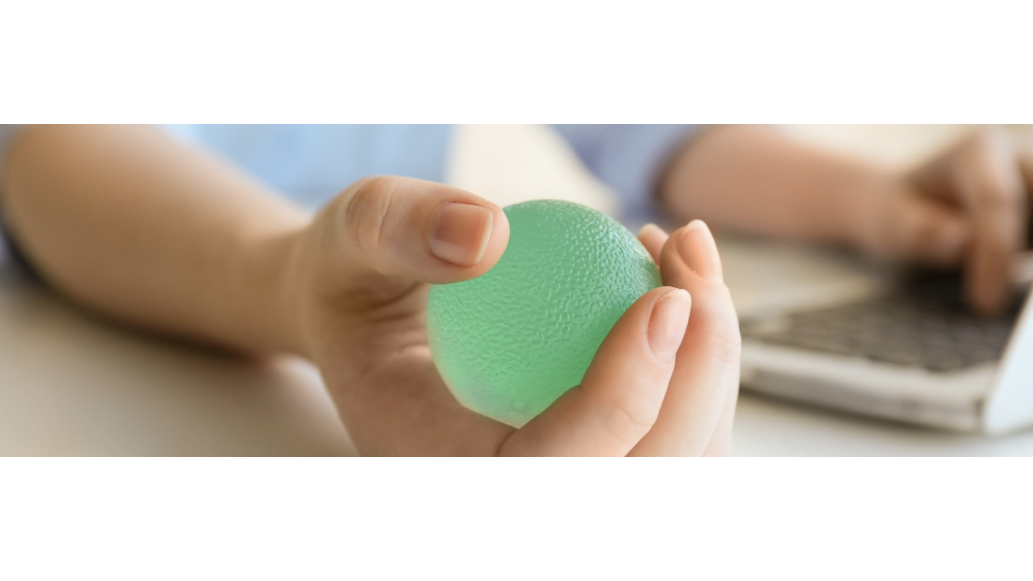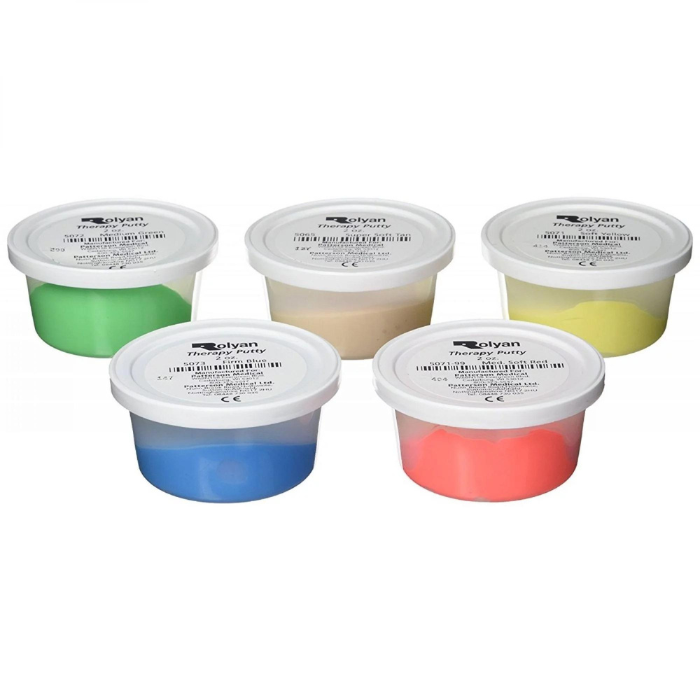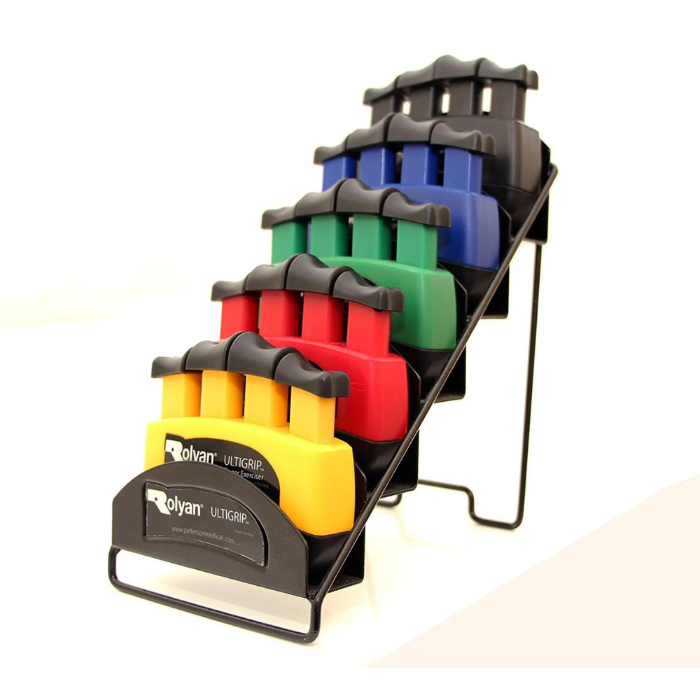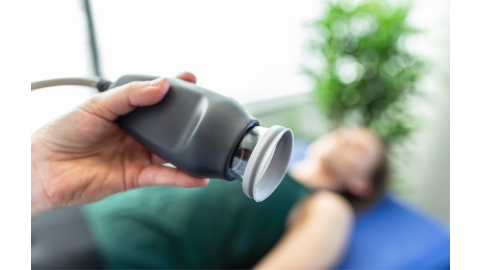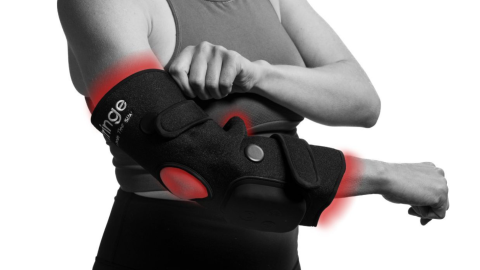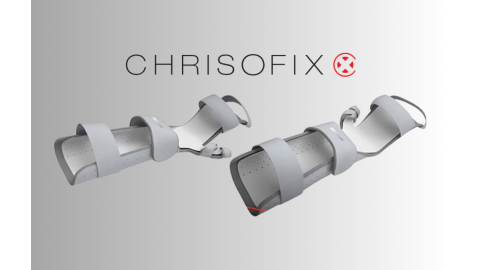Whether you’re a therapist trying to help your patients improve their grip strength or an individual looking to improve your hand strength at home, you have a lot of tools to choose from. The available options fall into two major categories, therapy putty and hand exercisers.
How do you know which tool you should choose to improve your grip strength? Compare the pros and cons of putty vs. exercisers to find the best choice for you.
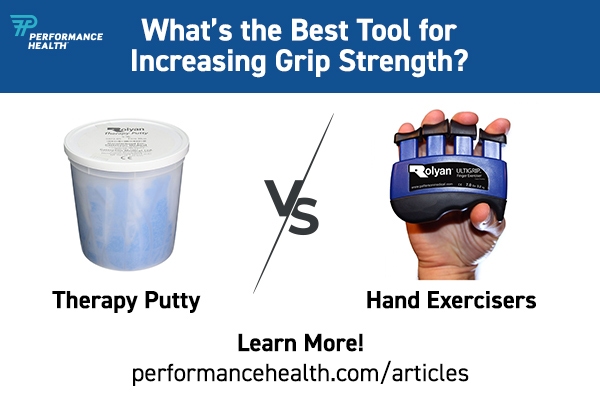
Therapy Putty vs. Hand Exercisers |
|
|
Therapy Putty
|
Hand Exercisers
|
|
Pros
|
Pros
|
Cons
|
Cons
|
I choose therapy putty. |
I prefer a hand exerciser. |
Why does grip strength matter?
Grip strength is needed to accomplish many everyday tasks independently. Turning door knobs, opening jars, taking pans off the stove, carrying a laundry basket full of clothes, getting dressed...all of these tasks require grip strength.
Disabilities, injuries, and other conditions can all reduce your hand strength and make these daily activities a struggle. Using putty or an exerciser, can help you strengthen your hands and remain independent!
I choose therapy putty. What are my options?
1. Rolyan Therapy Putty
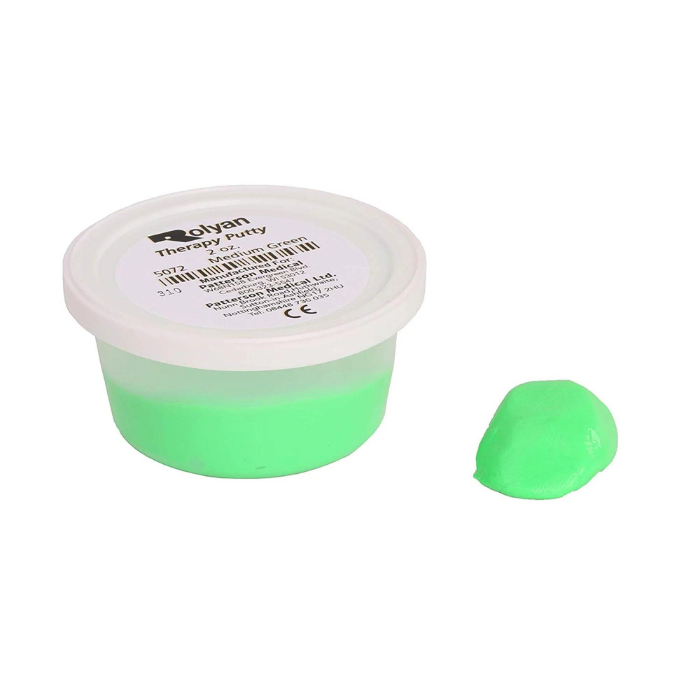
Sammons Preston Therapy Putty is the perfect choice for increasing hand strength after injury or surgery. The putty comes in a wide range of resistances and sizes making it great for home use or for giving samples to patients. It’s formulated for long term use and won’t stain or separate.
Perfect product for strengthening hand/wrist
“Product was as advertised. I had used a much more expensive item at physical therapy while trying to regain function and strength after a recent wrist fracture. I prefer having my own putty for hygiene reasons and also I find I use it almost daily just to strengthen fingers for piano playing, reduce trigger finger pain and improve flexion and extension. Thank you for making this product affordable.”
-grizziesmom, Amazon Customer
2. Sammons Preston Progressive Putty
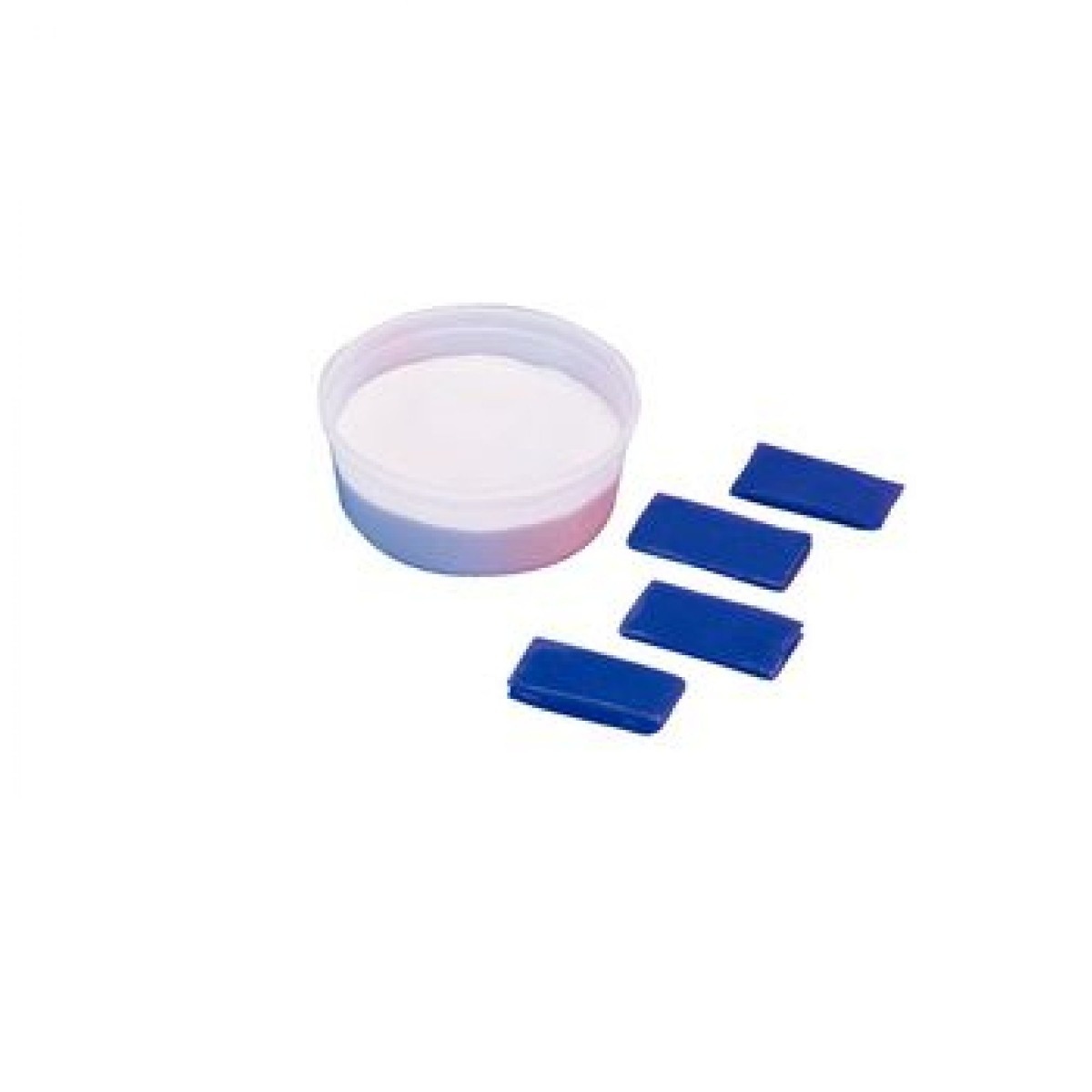
If the therapy putty is for personal use, a progressive putty might be a good fit. Instead of buying various containers of putty and moving to the next resistance when you grow stronger, all you need with progressive putty is one container. Then, you can add progress chips to the putty to make it more resistant as your strength improves.
I prefer a hand exerciser. What are my choices?
1. Rolyan Ultigrip Finger Exercisers
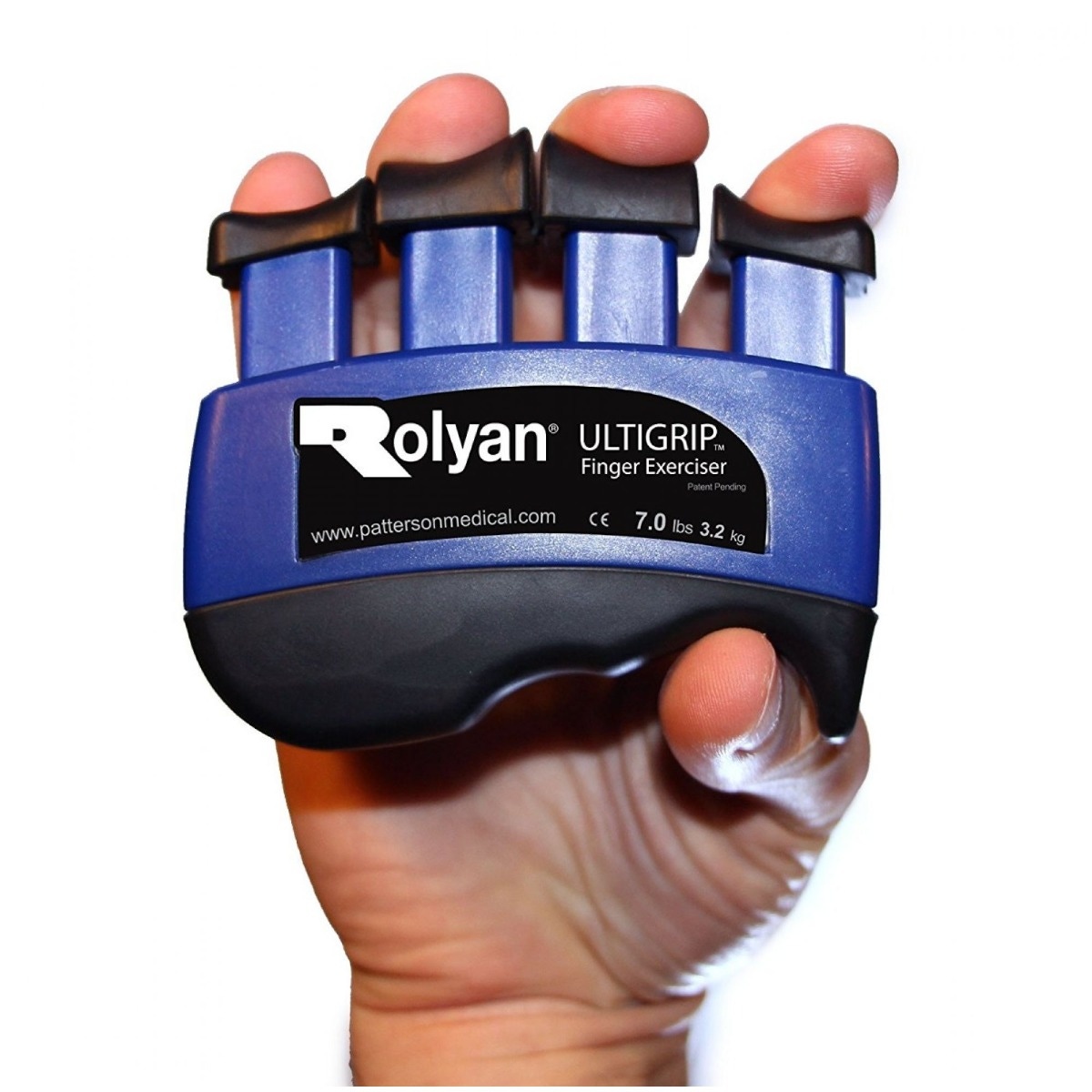
Whether you have a weak hand grip or need to rehabilitate from an injury, this exerciser is an excellent choice. The contoured design makes hand therapy more comfortable and the plastic design is easy to sanitize. Use the buttons individually to strengthen each finger or all at one to work on your whole grip. Swap in a thumb button to exercise that digit, too!
★ ★ ★ ★ ★
Great Product
“This is well made and works well for my wrist injury. I used these in therapy and needed more use between sessions. They are the exact item that I used in therapy.”
-Mary, Amazon Customer
2. THERABAND Hand Exerciser
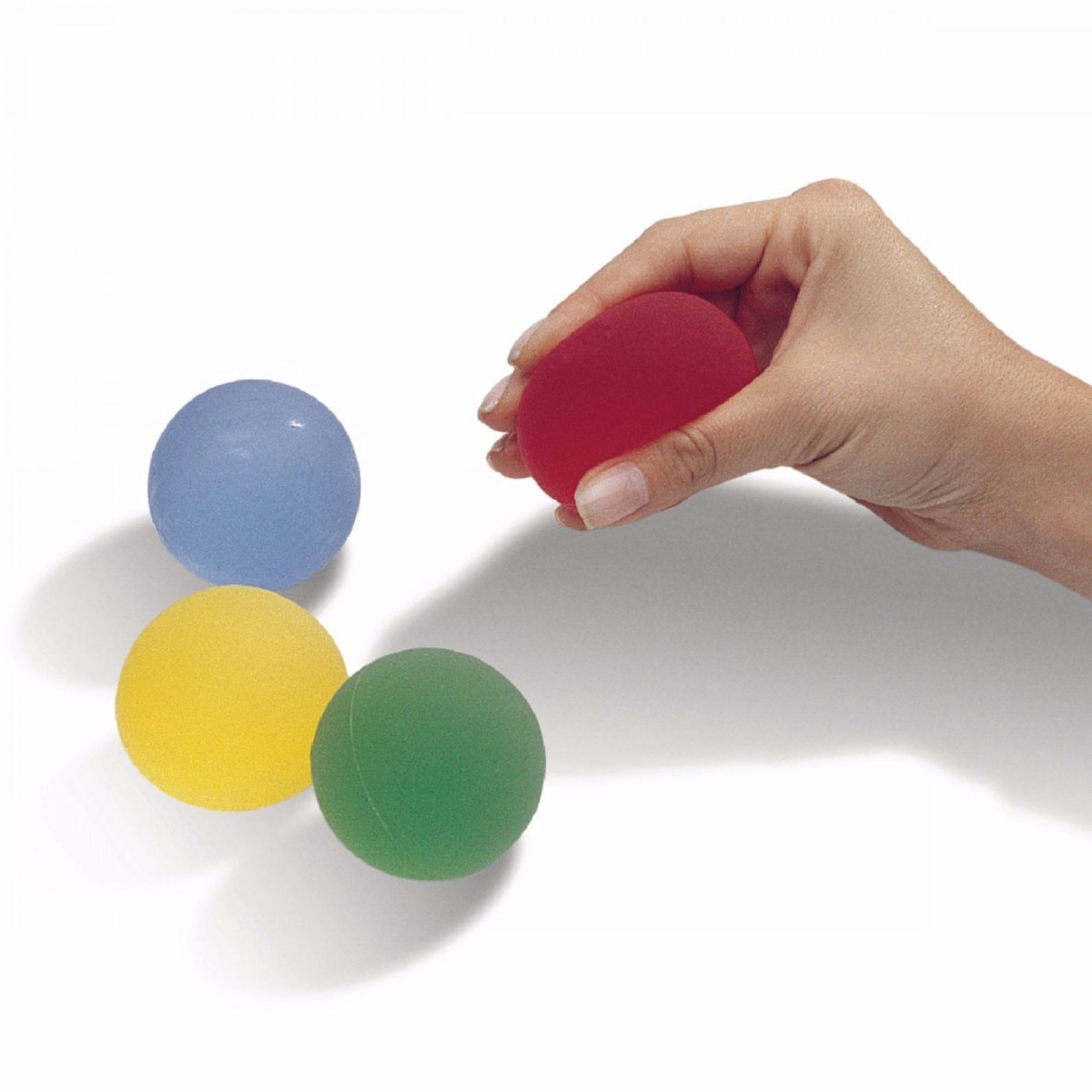
If you’re looking for a basic stress-ball-type hand exerciser, try the THERABAND version. With five resistances, your hand will get more of a workout than when using a traditional stress ball. Plus, you can heat or cool the ball for therapeutic relief! You can clean this exerciser using soap and water.
3. THERABAND Hand Xtrainers
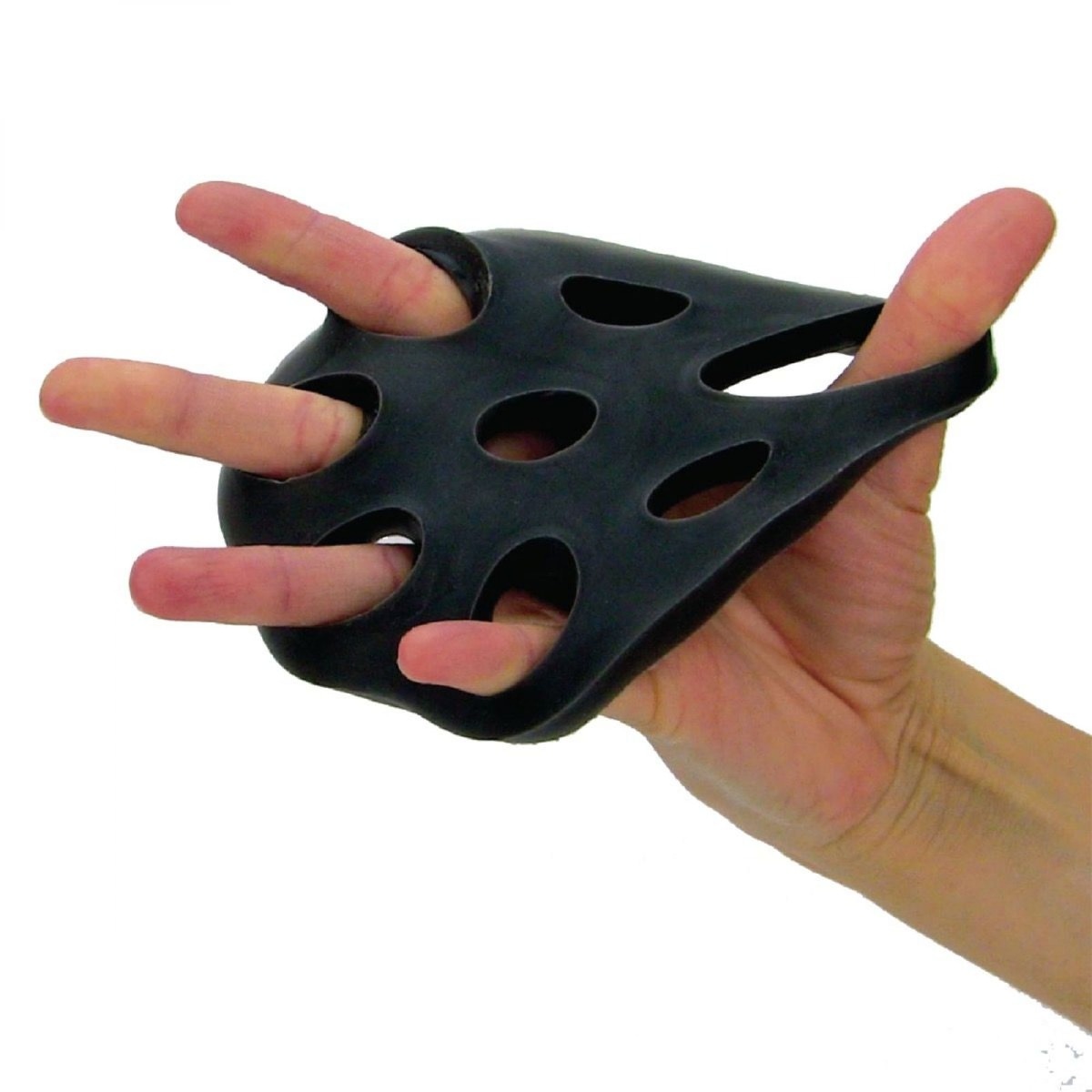
The THERABAND Hand Xtrainer also offers hand strengthening and hot or cold therapy at the same time. Just pop the Xtrainer in the microwave for soothing heat or chill in the fridge for therapeutic cold. Then use the hand exerciser to perform stretching and pinching exercises. Wash with soap and water to clean as needed.
4. Rolyan Graded Pinch Exerciser
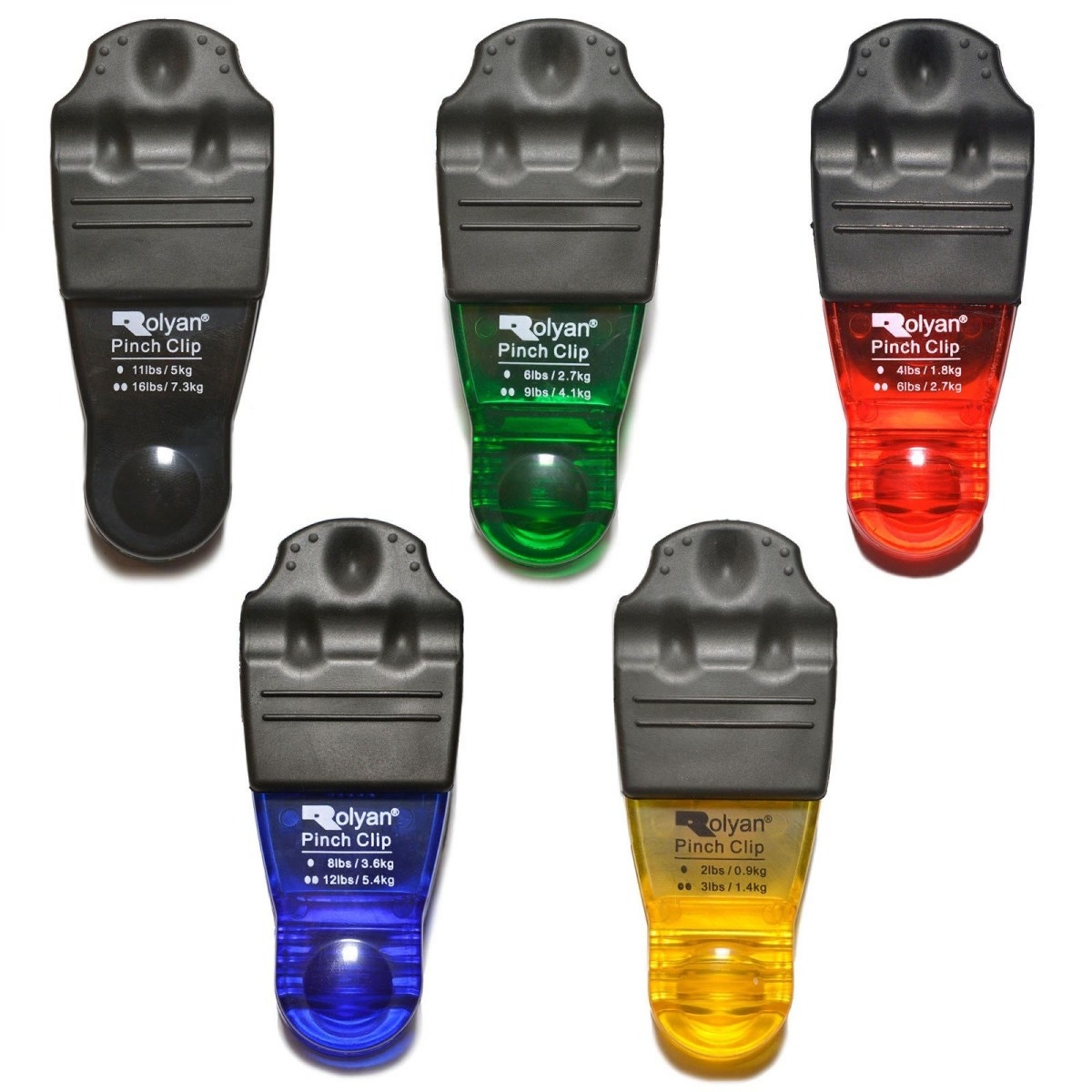
Focusing on the fingers? If your goal is improving your pinching skills, this set is the right choice. The durable clips help strengthen your fingers and move from 2 lbs. to 11 lbs. of resistance so you can gradually increase the difficulty of your exercises. These plastic exercisers can be wiped clean between patients. Use the Pinch Exerciser to pick up marbles or clip the exerciser to rods!
Recap
So now you’ve decided which side of the therapy putty vs. hand exerciser debate you fall on. If you chose therapy putty, check out these putty exercises to get started at home.
If you decided between hand exercisers or putty for hand strengthening in your rehabilitation center or therapy clinic, take the next step by choosing hand evaluation tools that can help you measure your patients’ progress.
Whether you choose therapy putty or hand exercisers, start strengthening your hand grip today!
Medical Disclaimer: The information provided on this site, including text, graphics, images, and other material are for informational purposes only and are not intended to substitute for professional medical advice, diagnosis, or treatment. Always seek the advice of your physician or other healthcare professional with any questions or concerns you may have regarding your condition.








 France
France Australia
Australia